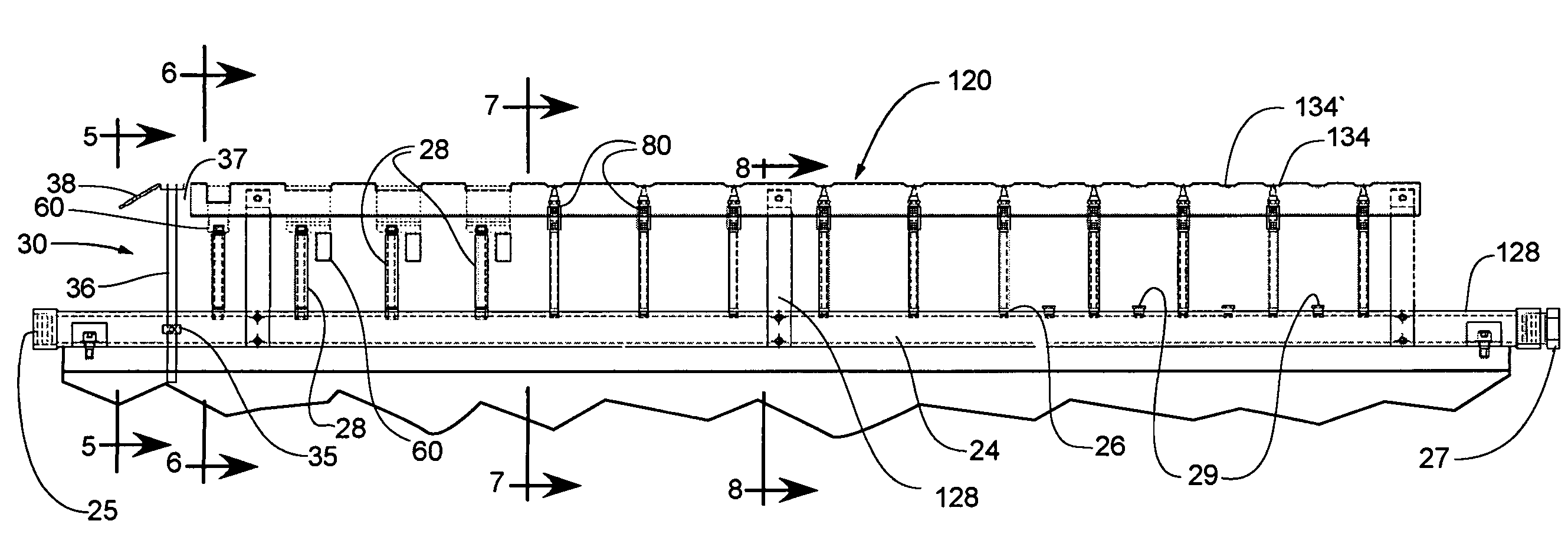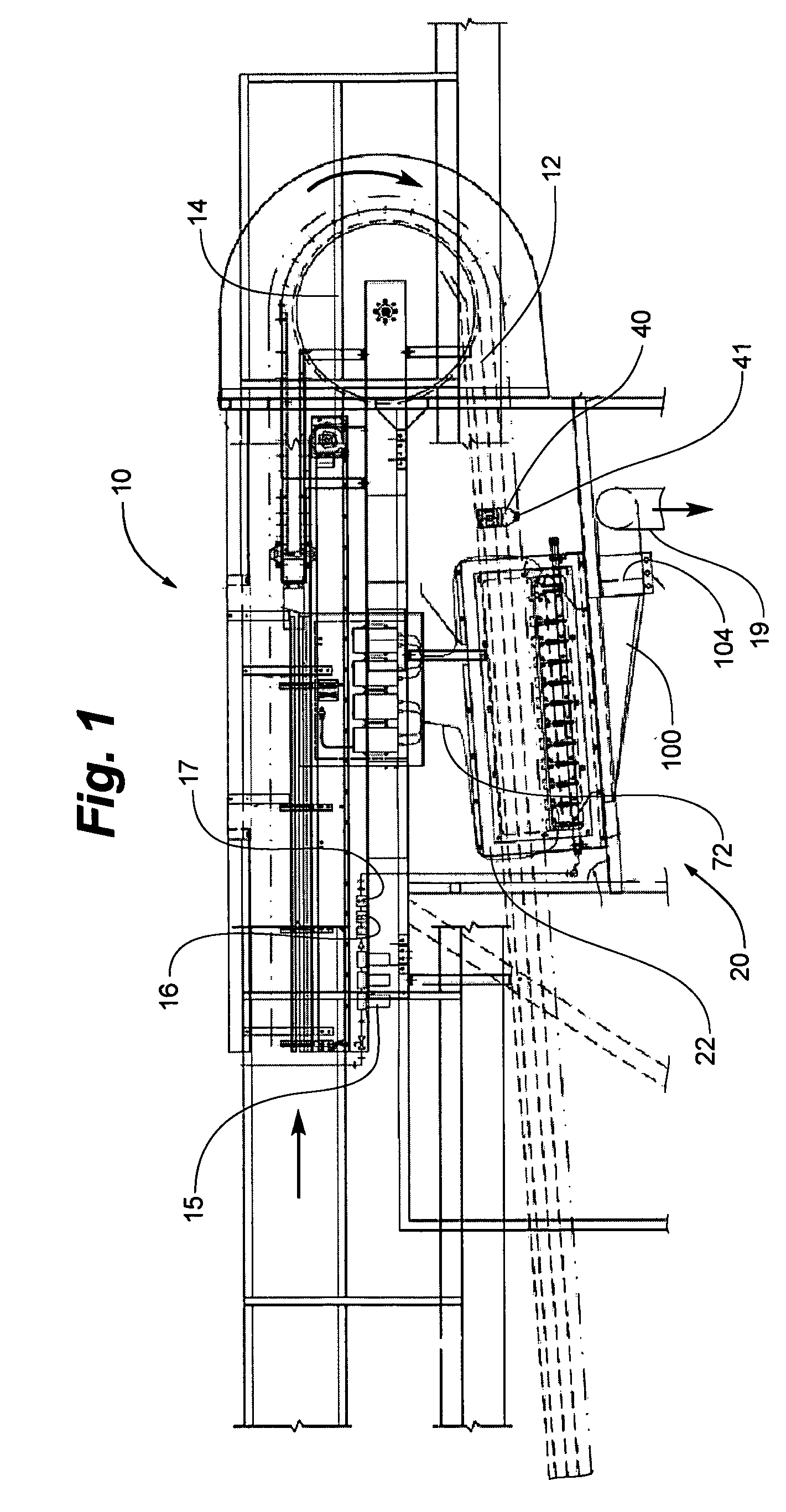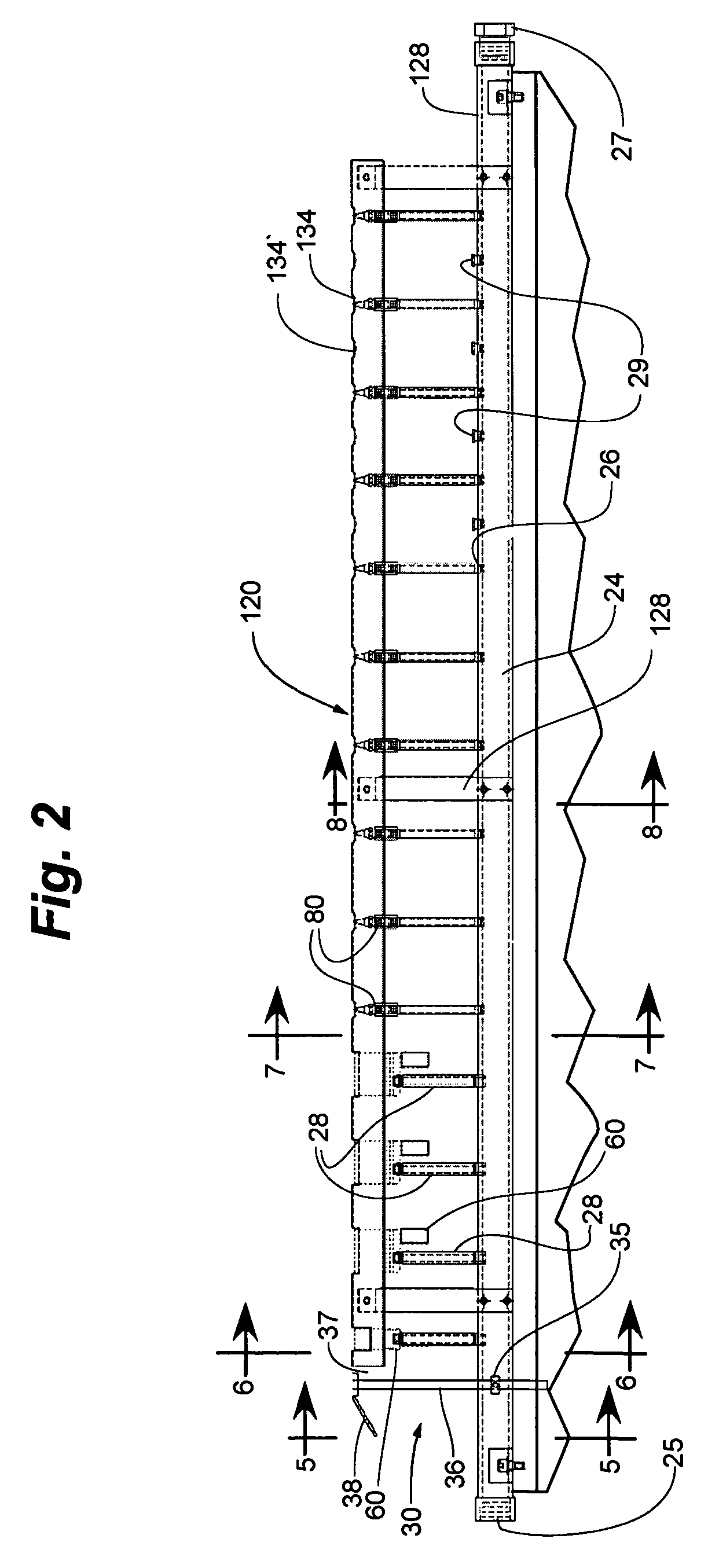Method of ionized air-rinsing of containers and apparatus therefor
a technology of ionized air and containers, which is applied in the field of apparatus, system and method of ionized air rinsing of containers, can solve the problems of difficult neutralization of charges, contaminated empty containers intended for filling with liquid beverages, and inability to remove all of the dust particles inside the containers. the effect of enhancing the dust removal effect of the apparatus
- Summary
- Abstract
- Description
- Claims
- Application Information
AI Technical Summary
Benefits of technology
Problems solved by technology
Method used
Image
Examples
Embodiment Construction
[0032]Referring now to the figures, in which like corresponding reference numerals are used to designate like or corresponding parts throughout the several views, a preferred embodiment of the inventive air rinsing apparatus is shown.
[0033]A part of a container cleaning system 10 according to the present invention is shown in FIG. 1. The system portion shown is that portion of the bottle processing line that cleans the inside of the bottles, one bottle 40 which is shown, as they are transported through the system 10. The bottles 40 are transported through the system so that each bottle traverses the various stations, for example, the bottle gripping station (not shown) or the bottle cleaning station shown in FIG. 1. The bottle line provides a series of guards, shown in phantom in FIG. 1, that retain the bottles 40 in a conveyor arrangement 12 that permits the bottles to pass through each station at a very high rate of speed, on the order of 800 bottles per minute.
[0034]The system 10...
PUM
| Property | Measurement | Unit |
|---|---|---|
| diameter | aaaaa | aaaaa |
| pressure | aaaaa | aaaaa |
| pressure | aaaaa | aaaaa |
Abstract
Description
Claims
Application Information
 Login to View More
Login to View More - R&D
- Intellectual Property
- Life Sciences
- Materials
- Tech Scout
- Unparalleled Data Quality
- Higher Quality Content
- 60% Fewer Hallucinations
Browse by: Latest US Patents, China's latest patents, Technical Efficacy Thesaurus, Application Domain, Technology Topic, Popular Technical Reports.
© 2025 PatSnap. All rights reserved.Legal|Privacy policy|Modern Slavery Act Transparency Statement|Sitemap|About US| Contact US: help@patsnap.com



